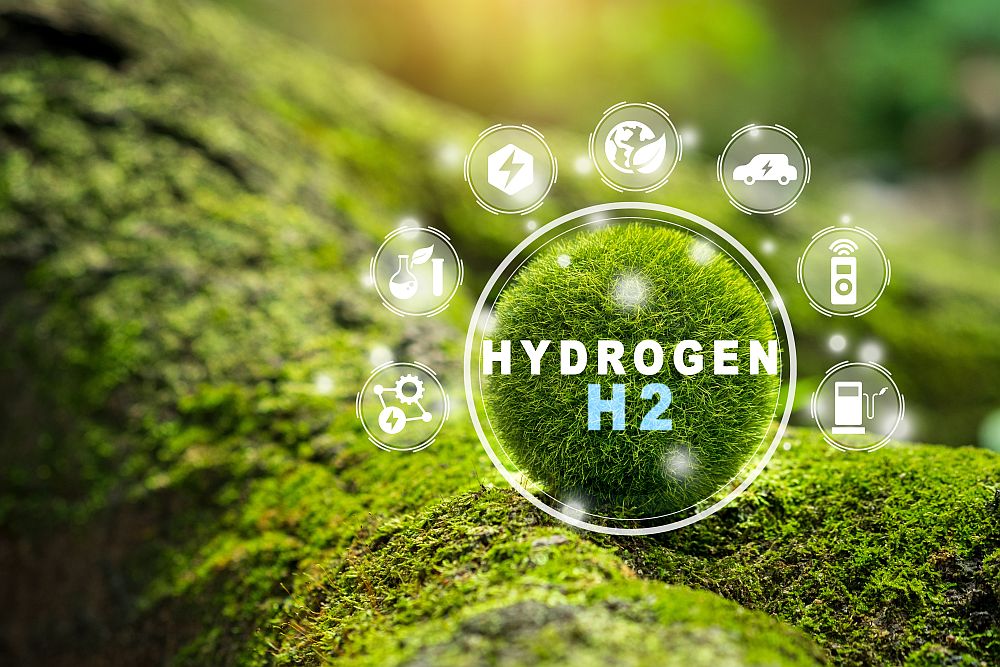So much to read, so little time. Maybe try anyway:
Scientists discover novel way to ‘heal’ defects in materials
In a paper published in Nature Materials, a team of researchers report they have succeeded in creating a defect in the structure of a single-layer crystal by simply inserting an extra particle, and then watching as the crystal “heals” itself. The trick to this self-healing property is that the crystal, an array of microscopic particles, must be curved. This effect, which carries important implications for improving the conductivity of electronics and other realms of materials science, was predicted six years ago by physicist Mark Bowick of Syracuse University, along with David Nelson, Homin Shin and Alex Travesset, in research supported by the National Science Foundation. NSF also funded the new study. In order to prove their prediction experimentally, Bowick sought out Paul M. Chaikin of the Center for Soft Matter Research at New York University. Chaikin enlisted the help of Irvine while he was a postdoctoral scientist working in Chaikin’s laboratory. All three researchers specialize in the branch of materials science called “soft matter,” which studies a wide range of semi-solid substances such as gels, foams and liquid crystals.
Apple files disappearing-feature iPhone patent
(The Register) Apple has filed a patent application for the ability to hide some of a device’s components, such as its camera, biometric sensors, or even its entire display, until they are needed. “Electronic devices are becoming more and more sophisticated, capable of performing a multitude of tasks from image capture to identity verification through biometric sensors,” patent application 20120258773 notes. That’s the good news; the bad news is that each new sensor clutters up the seamless shiny-shiny of an iDevice. The solution to this visual junkiness? Hide the sensors needed to accomplish those tasks behind switchable curtains such as those enabled by a polymer-dispersed liquid crystal window, and make them visible only when needed. In addition to hiding sensors, those switchable windows—as you might assume—would be appropriately color-matched to blend seamlessly with the device’s case when they’re hiding the components behind them.
‘Lava dots’ made from molten metal salt
(Futurity) Thanks to a chance discovery, scientists now know how to make hollow, coated versions of a nanotech staple called quantum dots. The new “lava dot” particles were discovered accidentally by researchers using molten droplets of metal salt. The results appear in the journal Nanotechnology. The researchers also found that lava dots arrange themselves in evenly spaced patterns on flat surfaces, thanks in part to a soft outer coating that can alter its shape when the particles are tightly packed. “We’re exploring potential of using these particles as catalysts for hydrogen production, as chemical sensors, and as components in solar cells, but the main point of this paper is how we make these materials,” says coauthor Michael Wong, professor of chemical and biomolecular engineering at Rice University. “We came up with this ‘molten-droplet synthesis’ technique and found we can use the same process to make hollow nano-size particles out of several kinds of elements. The upshot is that this discovery is about a whole family of particles rather than one specific composition.” Like their quantum dot cousins, lava dots can be made of semiconductors like cadmium selenide and zinc sulfide.
Cartilage made easy with novel hybrid printer
The printing of 3D tissue has taken a major step forward with the creation at Wake Forest University of a novel hybrid printer that simplifies the process of creating implantable cartilage. The printer was recently described in IOP Publishing’s journal Biofabrication, and was used to create cartilage constructs that could eventually be implanted into injured patients to help regrow cartilage in specific areas, such as the joints. The printer is a combination of two low-cost fabrication techniques: a traditional ink jet printer and an electrospinning machine. Combining these systems allowed the scientists to build a structure made from natural and synthetic materials. Synthetic materials ensure the strength of the construct and natural gel materials provide an environment that promotes cell growth. In this study, the hybrid system produced cartilage constructs with increased mechanical stability compared to those created by an ink jet printer using gel material alone. The constructs were also shown to maintain their functional characteristics in the laboratory and a real-life system. The constructs were also inserted into mice for two, four and eight weeks to see how they performed in a real life system. After eight weeks of implantation, the constructs appeared to have developed the structures and properties that are typical of elastic cartilage, demonstrating their potential for insertion into a patient.
With sensors, apps & data, my smartphone is (almost) my doctor
(GigaOm) If you think the Jawbone Up and Nike FuelBand are changing our perception of personal health, then wait until you see what Scanadu, a Mountain View, Calif.-based company, has planned for you. The two-year-old old company is the brainchild of Walter de Brouwer, a Belgian-born serial entrepreneur (EUnet-Quest and Star Lab) and member of TED, who in the recent past worked with Nicholas Negroponte on the One Laptop Per Child project. His team of a dozen-odd people, including biologists, chemists, data scientists and semiconductor engineers, is planning to develop a series of personalized health products that want to capitalize on the rapidly falling prices of sensors and other technologies and combine them with data and easy to use smartphone apps. It wants scientists and developers to figure out a handheld device that can diagnose 15 medical ailments based on sensors in the device. De Brouwer’s crew has come up Scanadu Scout, a square shaped device. that can be held next to the left temple when holding it with thumb and the index finger of the left thumb. The device communicates with your iPhone via bluetooth and a few seconds later you get a readout of your vitals such as heart rate, level of oxygen in your blood, pulse and body temperature. It is one of the many devices the company plans to build.
New technique reveals lithium in action
Exactly what goes inside advanced lithium-air batteries as they charge and discharge has always been impossible to observe directly. Now, a new technique developed by MIT researchers promises to change that, allowing study of this electrochemical activity as it happens. The reactions that take place inside a conventional lithium-air battery are complex, says MIT professor Yang Shao-Horn. “We focused on finding out what really happens during charging and discharging,” she says. Doing that required the use of a special kind of high-intensity X-ray illumination at one of only two facilities in the world capable of producing such an experiment: the Advanced Light Source at the Lawrence Berkeley National Lab in California. That facility made it possible to study the electrochemical reactions taking place at the surface of electrodes, and to show the reactions between lithium and oxygen as the voltage applied to the cell was changed. The tests used a novel solid-state version of a lithium-air battery made possible via collaboration with Nancy Dudney and colleagues at Oak Ridge National Lab. Using ALS, researchers were able to produce detailed spectra of how the reaction unfolds, and show that this reaction is reversible on metal oxide surfaces. This study showed that using metal oxides as the oxygen electrode could potentially enable a lithium-air battery to maintain its performance over many cycles of operation.
Manufacturing activity in developing countries encourages use of superhard materials in machine tools, according to new report
Global Industry Analysts announces the release of a comprehensive global report on Superhard Materials markets. Global Superhard Materials market is projected to reach $20.2 billion by 2018, driven by healthy economic, industrial and manufacturing activity in developing countries and the ensuing increased demand for highly efficient metal machining, boring, grinding, and nonmetal machining tools. Developing economies, on the road towards rapid industrialization, will continue to drive growth in the world market, especially in the machine tools sector. For instance, China is emerging into a major market for industrial diamonds encouraged by its low-cost export oriented manufacturing prowess. Technology innovations are also poised to benefit the market in the upcoming years. Growing demand for new abrasive products in manufacturing plants as a result of increased precision grinding needs in most end-user manufacturing sectors, is driving R&D investments in superhard materials. For instance, increased research focus is being shed on substitute materials to the traditional diamond such as, cubic boron nitride and polycrystalline boron nitride for cutting, grinding and machining applications. Rising environmental awareness and the ensuing focus on common rail diesel injection systems, given their ability to reduce carbon dioxide emissions, will create demand for superhard materials, such as ceramics in the manufacture of glow plugs, and piezoelectric-stacks in diesel engines. Also, as the diesel engine technology continues to develop in the future, ceramics will find potential applications in components, such as, turbocharger valve train components, glow plugs, piston, cap cylinders, exhaust train insulation, liners, air bearings, high-temperature bearings, and low friction liquid, lubricant-free bearings, among others.
Researchers develop new way to determine amount of charge remaining in battery
Researchers from North Carolina State University have developed a new technique that allows users to better determine the amount of charge remaining in a battery in real time. That’s good news for electric vehicle drivers, since it gives them a better idea of when their car may run out of juice. The research is also good news for battery developers. “This improved accuracy will also give us additional insight into the dynamics of the battery, which we can use to develop techniques that will lead to more efficient battery management,” says Mo-Yuen Chow, a professor of electrical and computer engineering at NC State. At present, it is difficult to determine how much charge a battery has left. Existing computer models for estimating the remaining charge are not very accurate. The inaccuracy stems, in part, from the number of variables that must be plugged in to the models. But now researchers have developed software that identifies and processes data that can be used to update the computer model in real time, allowing the model to estimate the remaining charge in a battery much more accurately. While the technique was developed specifically for batteries in plug-in electric vehicles, the approach is also applicable to battery use in any other application. Using the new technique, models are able to estimate remaining charge within 5 percent. In other words, if a model using the new technique estimates a battery’s state of charge at 48 percent, the real state of charge would be between 43 and 53 percent (5 percent above or below the estimate).
CTT Categories
- Biomaterials & Medical
- Electronics
- Energy


